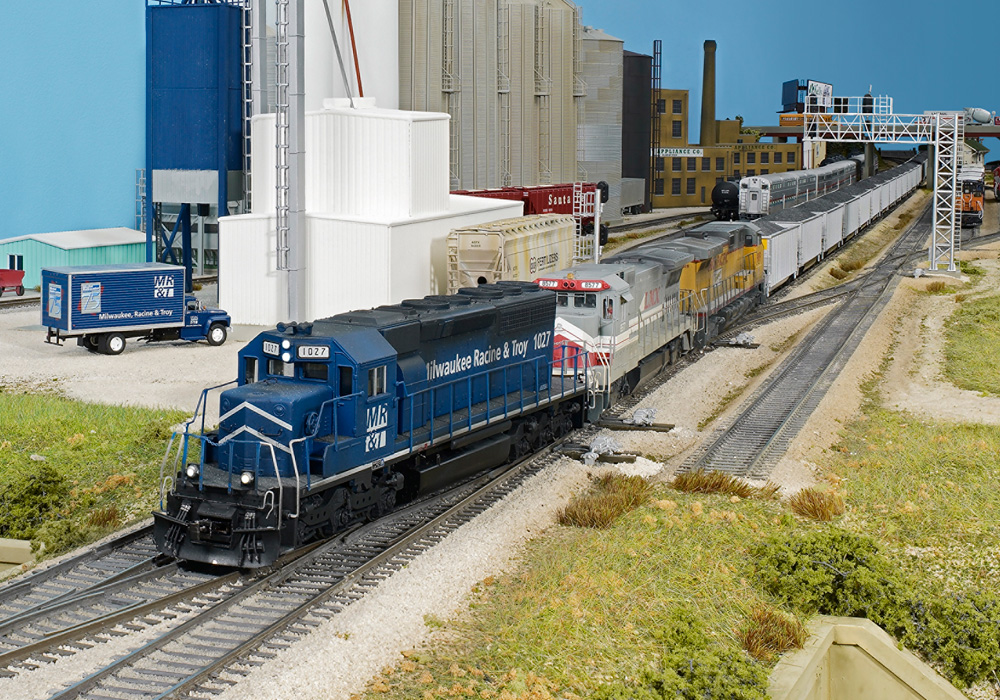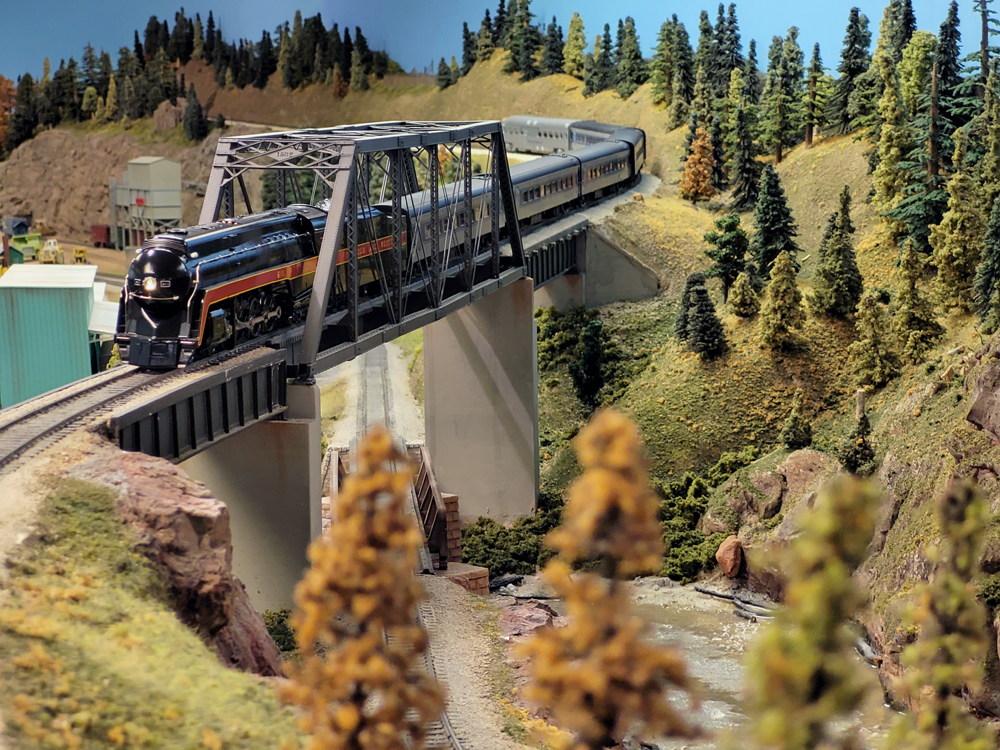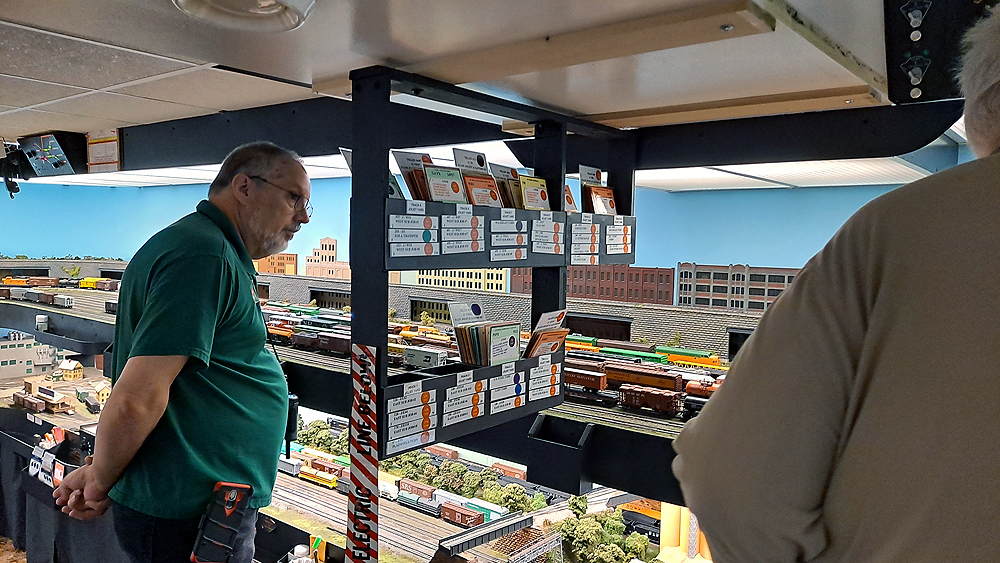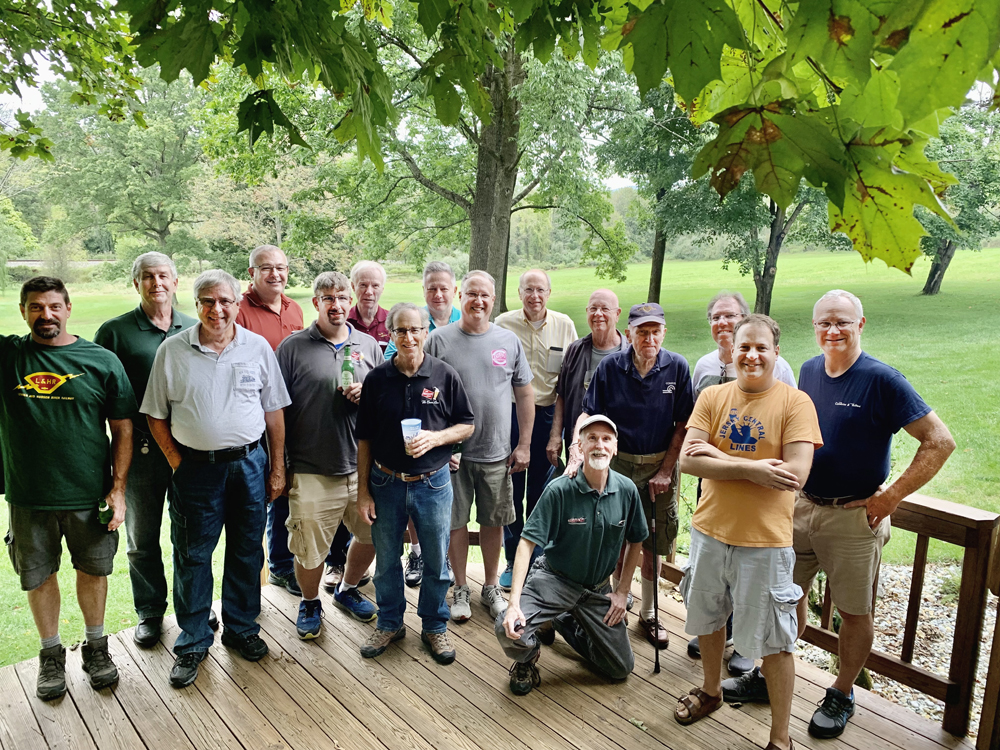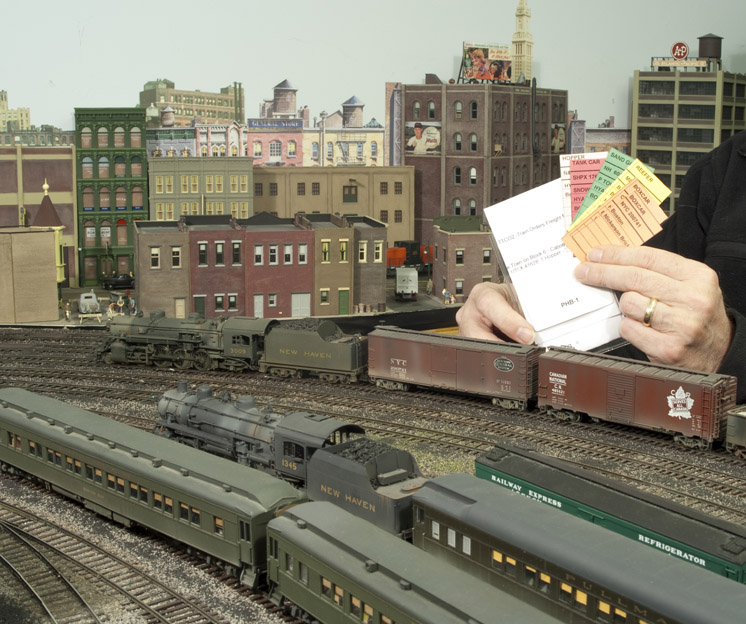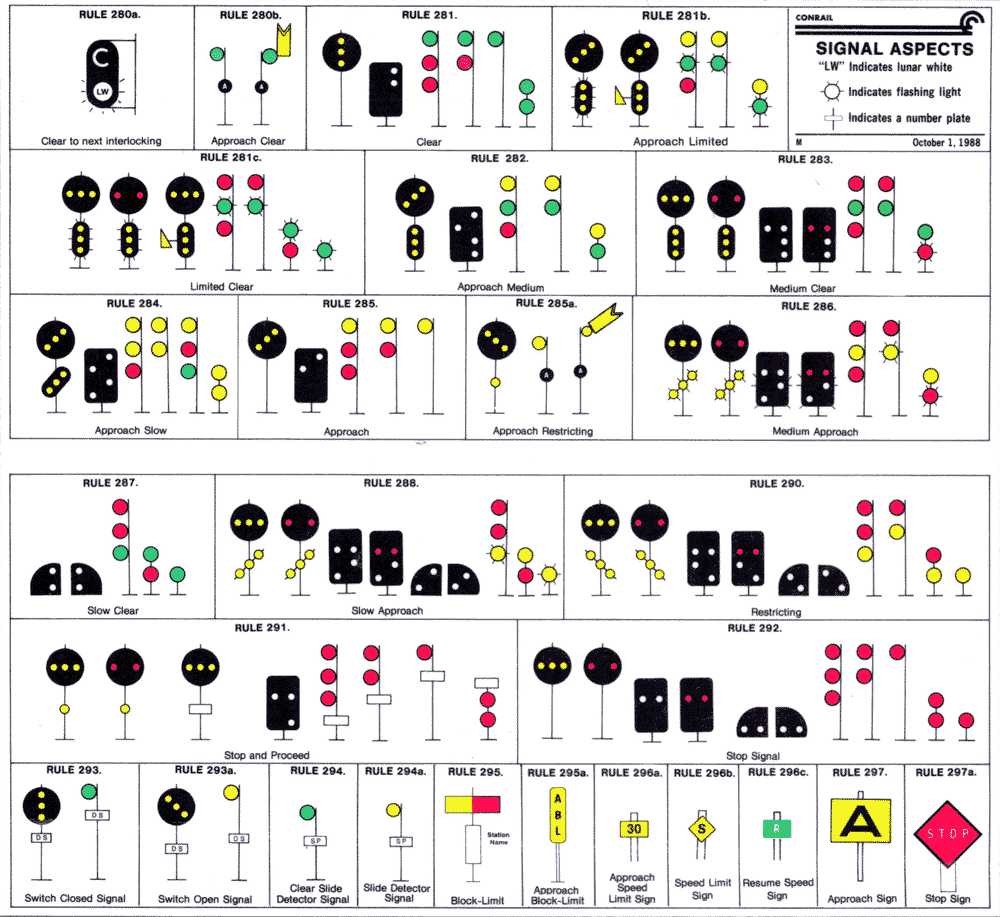
Admit it: Do you know what railroad signals mean? Do you panic when you shown up for an operating session at a strange layout and see it has working signals? Railroad signal aspects aren’t as simple as traffic lights. In addition to stop, caution, and go, railroad signals can mean stop and then go, keep going but slow down, prepare to stop ahead, and more.
Complicating matters is the fact that there are different kinds of signals, conveying different categories of information. Signals can tell a train engineer that the block of track ahead is occupied, which way a turnout is set, that a train order is waiting for him at the next station, that passengers are waiting to board at a flag stop, what the safe speed limit of the track ahead is, and more. In this article, though, we’ll focus on block signals, those that control and protect train movements from one section of track to another.
There are two kinds of block signals: Absolute and Permissive. Permissive signals are usually part of an Automatic Block Signal (ABS) system that changes the signal aspects automatically depending on track occupancy. Permissive signals are marked with a number plate and/or a sign bearing the letter I. A train reaching a permissive signal set to “Stop” may, after coming to a stop, proceed at restricted speed, prepared to stop upon spotting any obstruction or hazard ahead. Absolute signals are controlled by the dispatcher. A “Stop” aspect on an absolute signal means stop and stay until the signal changes or the dispatcher directly authorizes the movement. Absolute signals are identified by the letter “A” or the lack of a number plate. This is so if the engineer doesn’t see a number plate, he will presume the signal is an absolute type – the safer course.
While some block signals have a single head, able to display only one color at a time, others have two or three heads, conveying more complex information. This can include the safe speed limit on the track ahead or whether the block after next is also clear. They can also include “distant signals,” telling the engineer the status of the next block of track after the one he’s about to enter. Distant signals are usually distinguished from multiple-head signals by being positioned on a signal mast significantly lower than the other heads and slightly to the side.
Dwarf signals are one- or two-light fixtures situated near the ground, not on masts. They’re usually used in yards or interlockings where space is tight.
The chart above looks more complicated than it really is because it displays how the aspects look on different kinds of signals. But unless you’re going to be operating on a model of the Pennsylvania RR or Baltimore & Ohio, you probably won’t have to learn to read position-light and color-position-light signal heads. Most railroads will have standardized signals, so an engineer would only need to learn to read the aspects on one kind. This information is usually included in the railroad’s Employee Timetable, which are often available from model railroad historical societies as well as online booksellers.
To find out what railroad signals mean, read on. For more information about the different kinds of signals and how they are used on the prototype, see “Railroad signals: What they do, what they mean” on Trains.com. Click here to download the Conrail signal chart pictured above.
Definitions
There are only a few terms to learn. The tricky part is understanding the different combinations of these terms.
Clear: There is no train in the block ahead, nor in the next one past it. The train may proceed.
Approach: The block ahead is clear, but the next one after that may not be. The engineer should proceed prepared to stop at the next signal.
Stop: The train should come to a complete stop (with some exceptions) before passing the signal. If the signal is permissive, the train may then proceed at restricted speed; if it’s absolute, it must stop and stay until movement is authorized by signal or train order.
Normal speed: The maximum speed authorized for that train and that area of track. This is the default if no speed restrictions are imposed; a signal aspect that does not indicate a speed (Clear or Approach) is assumed to be normal.
Limited: A speed slightly lower than normal. This might be imposed due to the trackwork ahead, like tight curves, grade crossings, or turnouts. On the Conrail aspect chart shown above, limited speed means 45 mph for passenger trains, 40 mph for freights. Limited speed is usually indicated by a flashing green light.
Medium: About half speed. On most railroads, medium speed is not to exceed 30 mph.
Slow: A speed not exceeding 15 mph.
Restricted: The train should move at a speed slow enough to be able to stop within half the distance the engineer can see. Though the upper limit of Restricted speed is 15-20 mph, depending on the railroad and track conditions, it will most often be much slower.
Clear signals: Green means go
A green light almost always means a “Clear” signal. (There are a few “Approach” aspects that incorporate green lights, but they will be below yellow lights.) This means not only that there is no train in the block ahead, but also no train in the block past that. The engineer can proceed into the next block safely. Any other lights in the signal tell the engineer how fast his train can go.
Clear: A single steady green light, or a single green light over one or two steady red lights. On a trackside dwarf signal, this aspect will be displayed by two green lights. The train may proceed at normal speed.
Limited Clear: A flashing green light under a steady red light. On a three-head signal, the third light below the flashing green will also be steady red. Single-head signals, with only one light, can’t display this aspect. On a dwarf signal, the flashing green light may be alone, or over a steady red light. The train must proceed at limited speed through turnouts and interlockings.
Medium Clear: A steady green light under a steady red light. On a three-head signal, the bottom light will also be steady red. Single-head signals can’t display this aspect. On a dwarf signal, this aspect is marked by a steady green light over flashing red. The train may proceed through clear track at limited speed but should slow to medium speed when approaching turnouts, interlockings, and the next signal.
Slow Clear: A steady green light under two steady red lights. Two-head and single-head signals can’t display this aspect. A dwarf signal will display this aspect as just steady green, or steady green over steady red. As with the previous clear signals, the train should be prepared to slow to slow speed through turnouts and interlockings.
Restricting: The only “proceed” signal without a green light. This is displayed by a steady yellow light under one or two steady red. This is displayed on a dwarf signal by steady red over steady yellow, or just steady yellow. Single-head signals can’t display this aspect. The train should stay at restricted speed until passing a less limiting signal.
Approach signals: Yellow means prepare to stop
An approach signal means the train can proceed into the next block but should be prepared to stop at the signal after that. There might be another train in the next block, an interlocking that needs to have a route set through it, or any number of other situations that could change. Approach signals are almost always indicated by a steady yellow light on top; the exceptions are Medium Approach and Slow Approach.
Approach: A steady yellow light. On a single-head signal, it will be just the yellow light, while on a two- or three-head signal, the yellow will be on top, and the light or lights below it will be steady red. Dwarf signals can’t display this aspect; since dwarf signals are used in yards and interlockings, where slower speeds are the rule, that’s not usually a problem. The engineer may proceed at normal speed but should slow to medium speed before reaching the next signal.
Approach Limited: A steady yellow light over a flashing green light. If there’s a third signal head, the bottom light will be red. A dwarf signal will show a steady yellow above flashing green. Single-head signals can’t display this aspect. The train may proceed without stopping but should slow to limited speed and keep an eye out for the next signal.
Approach Medium: A steady yellow light over a steady green; on a three-head signal, the bottom will be steady red. A dwarf signal will be steady yellow over green. Single-head signals can’t display this aspect. The train can proceed without stopping but should slow to medium speed as it approaches the next signal.
Medium Approach: Though it sounds similar, this is a different aspect from “Approach Medium.” It’s displayed on a three-head signal as steady yellow in the middle, bracketed top and bottom by steady red. A two-head signal will be red over flashing yellow. A dwarf signal will show steady yellow over flashing red. Single-head signals can’t display this aspect. Unlike “Approach Medium,” a train should slow to medium speed immediately upon spotting this signal and proceed at this speed throughout the block.
Approach Slow: Two steady yellow lights on a two-head signal. On a three-head signal, it can be displayed as two steady yellow above a steady red, or one steady yellow on top, steady red in the middle, and steady green on the bottom. A dwarf signal will show two steady yellow. Single-head signals can’t display this aspect. The train should immediately slow to medium speed upon seeing this signal and then to slow speed before reaching the next one.
Approach Restricting: Trains moving faster than medium speed should immediately slow to medium upon spotting this signal, then to a speed allowing the train to stop if necessary at hand-lined turnouts and at the next signal.
Stop signals: Red means stop
Regardless of the number of lights on the signal, when the signal is “Stop,” they will all be steady red. This is where the difference between Permissive Block Signals – those marked with number plates on the mast – and Absolute Signals comes into play.
Stop and Proceed: On a Permissive Block Signal, which will be marked with a number plate or the letter “I” on the mast, a “Stop” aspect means the train must come to a full stop, then may proceed at Restricted speed, prepared to stop again if necessary. However, if the signal also bears a “G” sign, marking the beginning of a grade, loaded freight trains may treat a “Stop and Proceed” signal as if it were “Restricting.” That way the train doesn’t have to try to start again on a grade.
Stop: On an Absolute Block Signal, a “Stop” aspect means the train must come to a complete stop and wait. It must not enter the next block until the signal clears or the train is granted explicit permission by the dispatcher. “Stop” is the default aspect for signals in an interlocking; they only turn green when a route through the interlocking has been cleared by the tower crew.





